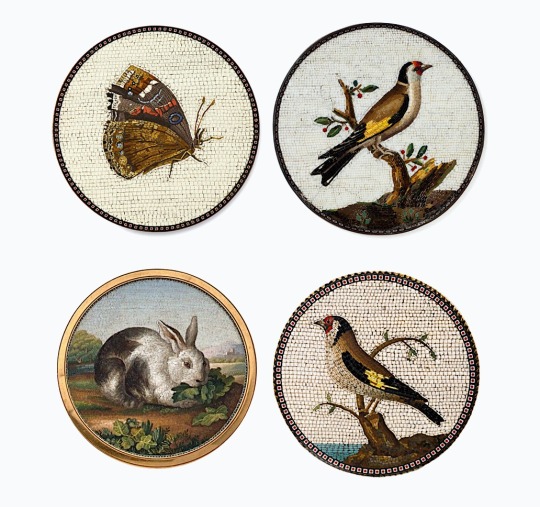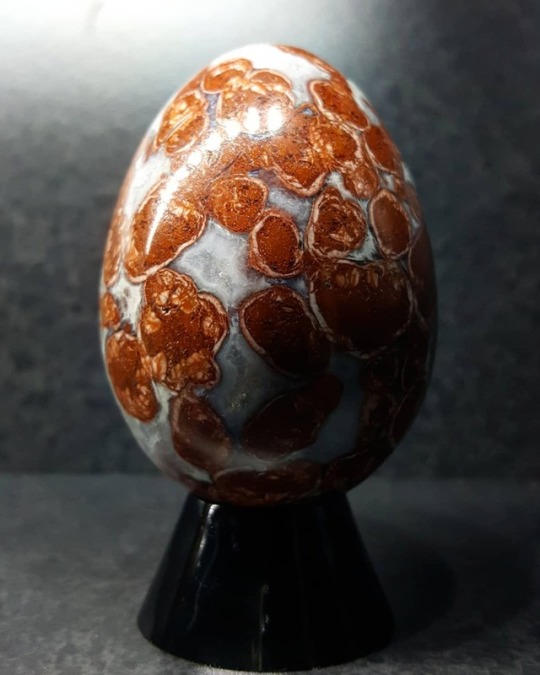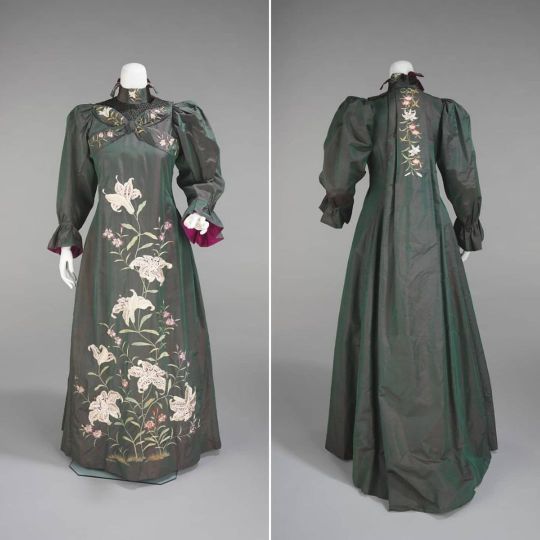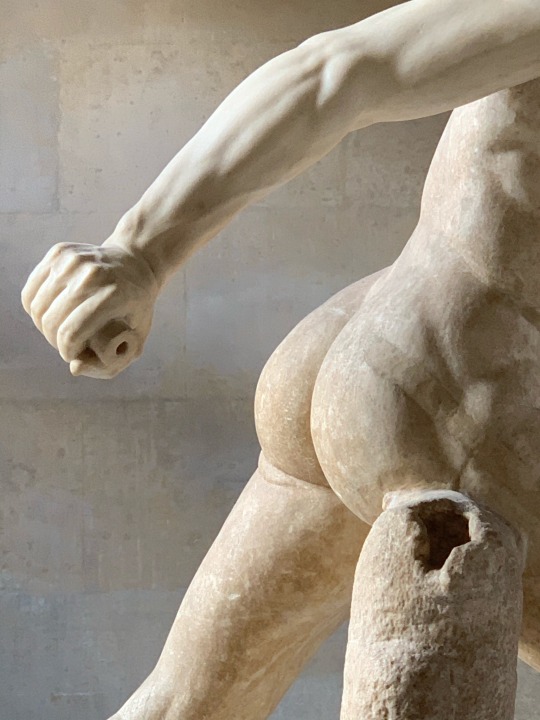#museumcollections
Explore tagged Tumblr posts
Text


Helmut Newton
Rome, 2024
#my photos#photography#aesthetic#landscape#design#light aesthetic#fashion#fashion wish list#fashion photography#fashion photoset#fashion photoshoot#museum aesthetic#museumcollection#museumlife#rome museum#art museum#museums#museum#collection#b&w moodboard#dark moodboard#art moodboard#helmut newton#ara pacis
13 notes
·
View notes
Text

The most Tumblr mood//
#greek tumblr#mood#aesthetic#μοοδ#relaxmode#sade adu#sade#paradise#museumcollection#spotify#soul music
2 notes
·
View notes
Text
A masterpiece of Art Nouveau elegance. ✨🦋 This breathtaking dragonfly brooch, crafted in 1890 by Edgar Bense for Boucheron, embodies the delicate beauty of nature in gold, enamel, and diamonds. A true work of wearable art from The MET’s collection. Would you wear it?

Dragonfly brooch
c. 1890
by Edgar Bense for Boucheron
The MET
#artnouveau#antiquejewelry#dragonflybrooch#victorianjewelry#boucheron#museumcollection#finemetalwork#jewelryhistory#luxuryjewelry#artlovers#masterpiece#jewelrycollector
1K notes
·
View notes
Text
#museums #museumexhibitons #museumcollections #museumshowcases #museumdisplaycases #museumdisplay #museumdisplayunits #museumartifacts #museumobjects
0 notes
Text

Miniature Masterpieces 🔥 No other object encapsulates the skill and innovation in the arts of the late 18th and early 19th century like micromosaics.
See wonderful eclectic collectibles at 🔥 Busacca Gallery
#Micromosaics #Antiques #Antique #ArtMosaic #Mosaic #AncientArt #Collectible #Collectibles #ArtCollectibles #ArtCollections #MuseumCollections #GalleryCollections #Curator #Collector #ArtCollector #InteriorDesigner #JewelryDesigner #ArtDesigner #MuseumArchitecture #Architecture #ArchitecturalDigest #HomeDecor #Decor #Interiors #ArchitecturalInteriors #Artist #BusaccaGallery
0 notes
Text
Object of the day!


Hi there! I’m Julia, the current collections intern for the Museum of Danish America. I’m excited to share what I get up to at the museum with all of you.
I am primarily working on inventory of the textile collection, and I often come across cool and unusual things as I work through the many archival storage boxes, like today’s object of the day!
This pillow (object ID: 1989.078.001) was a Christmas present from Hedvig Andersen Carlson to her father, Julius Albert Andersen, a Danish immigrant from Copenhagen. Julius was a creamery operator, and the pillow is made out of the ribbons he received from creamery conventions he attended. The ribbons range in date from 1902 to 1931, and most are from areas in Minnesota.
The pillow is not only visually striking, but the thought, time, and care that went into its creation make it an even more impactful part of our collection!
--Julia
#objectoftheday#museumobject#MuseumofDanishAmerica#intern#museumcollections#pillow#creamery#dairy#collectionsintern#MoDA#danishimmigrantmuseum
3 notes
·
View notes
Photo

Yet another belated observance...this time #InternationalMuseumDay...with ongoing closures, museums really need help! Not only are they places for you to visit & enjoy learning, but often, like natural history museums, they are important scientific, cultural, and other academic institutes. There is A LOT of work necessary to maintain the displays, collections, & infrastructure, as well as much research going on behind the scenes...& so many are currently left without much of a way to fund all this. If you are able, please make a donation, purchase merchandise, or sign up for annual membership with your favourite museum! #IMD2020 #museum #naturalhistorymuseum #museumcollections #specimens #taxidermy #fossils #display #exhibit #research #iziko #izikoafricanmuseum #capetown #amnh #nhmla #TravelChatSA #hallofbiodiversity #schreiberhallofbirds #sociableweaver #verreauxseagle #birds #raptors #tiger #panda #dinosaurs #triceratops #schreiberhall #ralphwschreiberhallofbirds (at Iziko South African Museum) https://www.instagram.com/p/CBQ9gcZgpX-/?igshid=1cio3g7vaj7xk
#internationalmuseumday#imd2020#museum#naturalhistorymuseum#museumcollections#specimens#taxidermy#fossils#display#exhibit#research#iziko#izikoafricanmuseum#capetown#amnh#nhmla#travelchatsa#hallofbiodiversity#schreiberhallofbirds#sociableweaver#verreauxseagle#birds#raptors#tiger#panda#dinosaurs#triceratops#schreiberhall#ralphwschreiberhallofbirds
1 note
·
View note
Text










The Musée de la Chasse et de la Nature, or ’The Museum of the Hunt & Nature’, is a stunning collection of both classic and contemporary pieces. The museum itself is truly a piece of art that one wanders through. A celebration of man’s obsession with animals, hunting and conservation.
Artist Kohei Nawa’s gorgeous ‘PixCell Deer’ is currently on display along side classic stags and other fauna. From Japan, Nawa’s cultural belief in the sacred nature of deer cannot be more clearly defined here.
And, much to my delight, an entire room is focused on dogs. Louis XIV’s portraits of his hunting hounds and lap dogs are featured.
Modern works are sprinkled throughout this beautiful 1600s mansion. You might find modern sculptures decorating a vast antique gun collection or trophy room. I finally got to see one of Kate MccQwire’s stunning feather pieces. (I could not get a satisfactory photo sadly. Her work can be seen here: @kate_mccgwire)
Also in the collection is this expressively deceased bronze bear head by artist Nicolas Darrot. Shown simply here, it has a hidden bronze diorama within it’s neck.
Through its art, the collection also makes one look at the ways in which we utilize animals today. Pascal Bernier’s piece ‘Farm Set’ uses one taxidermy hen and a mirrored box to make a big statement about factory farming.
There’s no ‘bad taxidermy’ here and you can see the collections are truly alive. Wonderful to see such a vibrant institution supporting the past and the future of wildlife artistry and design.
#taxidermy#preytaxidermy#allismarkham#taxidermie#science#ornithology#naturalhistory#biology#museums#birds#paris museums#museumcollections#natural history museum
600 notes
·
View notes
Photo

Now in the permanent collection of the Los Angeles County Museum of Art, Procession, 1988, oil on shaped canvas, 84 x 114 inches. Thank you to Clara & Jason Stevens for their generous donation in honor of Greg Escalante. #LACMA #museumcollections #representationalpainting #narrativepainting #realistart #shapedcanvas #MOCA #vangogh #theblindleadingtheblind #yesmyfriend #gregescalante #brueghel #fscotthess
#museumcollections#representationalpainting#brueghel#realistart#moca#shapedcanvas#narrativepainting#theblindleadingtheblind#yesmyfriend#gregescalante#fscotthess#lacma#vangogh
2 notes
·
View notes
Photo

A one-billion year old egg?! This unusual egg was made from a polished piece of fossilized bacterial mat called a stromatalite over 1 billion years old! This fossil contains some of the first organisms on the planet: cyanobacteria and green algae. Cyanobacteria are thought to be largely responsible for increasing the amount of oxygen in earth's early atmosphere through their photosynthesis. We wouldn't be here without them. My favorite part about working in a museum is being around these fascinating objects that tell such hugely important stories of how life originated and evolved on this planet, and that is a beautiful, wonderful thing. Support YOUR local museum! #happyeaster #easter #easteregg #fossil #egg #coloredeggs #wearescience #cle #scicomm #wearestemsquad #museumed #museumcollections #stem #womeninstem #cleveland #thisiscle #sunday #paleontology #stromatolite #cyanobacteria #algae #fossils (at Cleveland Museum of Natural History)
#stem#paleontology#fossil#museumed#sunday#wearescience#museumcollections#stromatolite#coloredeggs#wearestemsquad#cleveland#egg#easteregg#scicomm#cyanobacteria#fossils#cle#algae#womeninstem#easter#thisiscle#happyeaster
14 notes
·
View notes
Text
Winter in Prince William County: Hazardous Sled Rides & Other Memories
By: Lisa Timmerman, Executive Director
Many of our oral history and narratives from Prince William County, c. 1920s, describe Dumfries as a small, segregated town with a few stores, businesses, and community spaces. While people traveled to Quantico and to Washington, D.C., the traffic on Route 1 was much lighter than it is today (2020). This is very important if you are a child (or adult) eyeing your sledding options.
Whether you have memories of grabbing a cafeteria tray or an actual sled, sledding is still a popular activity. While historians identified the first sledders to be the Egyptians using it to transport rocks and other heavy materials, the Romans purportedly rode their shields as sleds during the Cimbric War, 113-101 B.C. Russians and eventually the French embraced sledding for entertainment, and the activity became more popular in America in the 1860s when Henry Morton began mass producing wooden sleds with metal runners. By the 1910s, safer sleds, those with some actual steering, hit the market calming the public’s alarm over their children’s safety. While we do not have specifics on the types of sleds used in Dumfries, a white woman in her 80s remembered tying their sleds to actual vehicles:
“She’d take the children. All the people would take their sleds and hang on to one sled and she’d have about a dozen sleds pulling them all around these streets. Then we could get up on top of the hill, which was 234 then, which is Duke Street now, but it was 234. And go from the top all the way down to the bridge that was Number 1 Highway. Someone would be down there at the crossroads, where Number 1 came, and made a turn to go across the bridge. It didn’t go straight through there to stop the traffic…They’d stop and maybe it was one or two car cars until we came through on the sleds.”

(HDVI Collections: Ice Skate Sharpener, 20th c., owned by Cecil Garrison, gifted by Jack Garrison, currently not on display)
If travel were possible, you could enjoy ice-skating with your friends. The earliest documented ice-skating can be seen in a 1539 Map of Scandinavia, but the earliest skates date to 1800 BC made from bone. While the oily nature of bone helped gliding when gaining momentum, you needed to use a stick to help “jumpstart” your fun. By the 13th century through the 18th century, ice-skates evolved using wood with a metal blade attached underneath. Skating became more popular once more affordable and mass-produced skates hit the market, and designers trimmed and lengthened the blades for speed and transportation, helping to evenly distribute a skater’s weight. According to one oral history, children enjoyed skating at Gibson Mill Dam:
“…[W]e used to ice skate in the winter time out there. They built big fires and ice skated. The blacks and the whites. It was a copper dam. The timbers that shorn up the dam itself were mostly chestnut, and the couplers were mostly 8x8 ft and these were continuous all the way across the stream and the couplers were filled with stone.”

(HDVI Collections: Leather Skates and Cotton Socks, early 1900s., owned by Cecil Garrison, gifted by Jack Garrison)
Dewitt Bates reminiscences of early Prince William County included methods to keep your food cold if you had access to a well:
“I don’t know how that they paid the heating bill, but, when you got through eating, there wasn’t nothing left…If they have anything left, if they have a well, they put it in a bucket and put it down and rest. And I’ve seen milk in a well that way…Then finally, they would get a icebox. They’d get a piece of ice…Yeah, we made one one time. We took a great big box and put the ice inside. Yes, Sir. I’ll tell you, the old people, they come on, but they had a good time though.”
These reflections give us a glimpse of life in Prince William County from risky wintry fun to methods of food preservation and safety. The next time you drive through Dumfries on Route 1, imagine the shocked faces and expressions people must have had to see an adult willingly tie sleds onto the back of their car.
Source Note: The three narratives are available in the Lee Lansing Research Library. The National Park Service record, “Prince William Forest Park: The African American Experience”, included the African American Oral History Project in an attempt to recreate “…the history of African Americans residing on land that is now part of PW Forest Park…creating a microhistory of ordinary people’s lives by exploring the circumstances of daily living within the context of the larger society.” This record captured both black and white person’s experiences. In 1999, The Eastern Prince William Ministerial Association sponsored an event titled “Breaking the Legacy of Racism: Honoring the Displaced Families of Prince William Forest Park”, which sought “…to address through repentance, prayer, and fellowship the hurt caused by the displacement of families when the Federal government took the land for PW Forest Park and by the racism inherent in the design of the Park (that is, separate, non-connecting entrances for whites and blacks).”
Note: Our last program of 2020 is this Saturday, 12/19, @ 10am! Sign up with your family and enjoy our Children’s Day at the Museum Sponsored by Walmart presentation on Winter Weather Myths! Not only will we talk about a winter favorite, the woolly worm, we will also suggest activities for your home! Click here for free tickets.
(Sources: Payne-Jackson, Arvilla and Sue Ann Taylor. Prince William Forest Park: The African American Experience. National Park Service: National Capital Region, June 2000 (Lee Lansing Research Library); Nelson, Tom. The Dewitt Bates Oral History: Recollections of Batestown. Prince William County Historical Commission, April 1984; Science Friday: Mayer, Johanna. The History of Ice Skates, March 2018; The Wall Street Journal: Foreman, Amanda. A Brief History of Sledding: An American Symbol that’s older than Egypt’s Pyramids, February 2017)
#snow#wintermemories#localhistory#pwforestpark#northernvirginia#historyathome#museumfromhome#ice skating#sledding#familyhistory#museumcollections#destinationdumfries#oralhistory#primarysources#winter#vintage#research#archives
0 notes
Photo

Silk Tea gown, 1898–1901 A woman wore a teagown to receive guests in her own home in the late 19th and early 20th centuries. These garments were far less formal and structured that typical day or evening wear, and as a result, sometimes show more creative or unusual inspirations, such as historic or non-Western forms of dress. This example is a beautifully made and decorated teagown, which shows the influence of both Japanese embroidered kimonos and 18th century robes à la française. Interior padding intended to provide warmth and the deliberate choice of a magenta lining which picks up the purple details in the lily motifs are both signs of superior design and workmanship. Furthermore, the asymmetry of the embroidery is in keeping with the Art Nouveau aesthetic. While the maker is no longer known, the smocking of the bodice clearly relates to the distinctive Liberty & Company fashions in vogue during this period, and the store might easily have been the source for this unparalleled example. HAPPY NEW YEAR. #history #museumcollection #antiquetextile #instamuseum #museumoninstagram #antiquesilk #historicaldress #costumehistory #fashion #historicalfashion #historicalclothing #dresshistory #fashionhistory #historicalcostume #fashionhistorian #19thcentury #19thcenturyfashion #fashionexhibition #fashioncuration #fashionmuseum #dressmuseum #costumemuseum #historyofcostume #historyoffashion #historyofdress #teagown #happynewyear Source: The MET https://www.instagram.com/p/CYJKNbvgiHP/?utm_medium=tumblr
#history#museumcollection#antiquetextile#instamuseum#museumoninstagram#antiquesilk#historicaldress#costumehistory#fashion#historicalfashion#historicalclothing#dresshistory#fashionhistory#historicalcostume#fashionhistorian#19thcentury#19thcenturyfashion#fashionexhibition#fashioncuration#fashionmuseum#dressmuseum#costumemuseum#historyofcostume#historyoffashion#historyofdress#teagown#happynewyear
1K notes
·
View notes
Text


Rome, 2020
#my photos#photography#aesthetic#nature#rome#landscape#design#fashion#art museum#museum aesthetic#museumlife#museumcollection#ancient rome#galleria#architecture#painting#paintings
1K notes
·
View notes
Text



Iconic butts in Louvre
#louvre#statues#ancient greeks#greek aesthetic#greek posts#antique#dark academia#light acadamia aesthetic#museumcollection#museumlife
269 notes
·
View notes
Text

"El Aquelarre" "Witches' Sabbath"
Francisco De Goya
(1797-1798)
#photoblog#photography#blogger#art#arte#museumcollection#museumlover#museo#pinturas#witches#brujas#dark art
289 notes
·
View notes
Photo


07.13.2021 | a painting from the piccolomini spannocchi collection at santa maria della scala in siena and records from the 1865 dante anniversary celebrations held in florence in the archivio comunale storico di firenze
#art history#history#classical mythology#painting#art#art details#art detail#manuscript#letter#library#academia#light academia#dark academia#archive#archival work#research#aesthetic#art museum#museum#museumcollection#siena#florence#my edit
509 notes
·
View notes